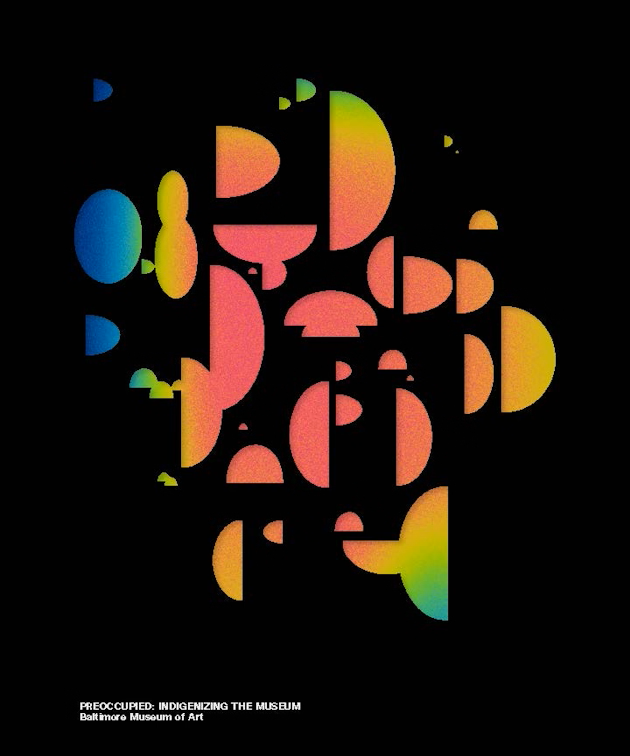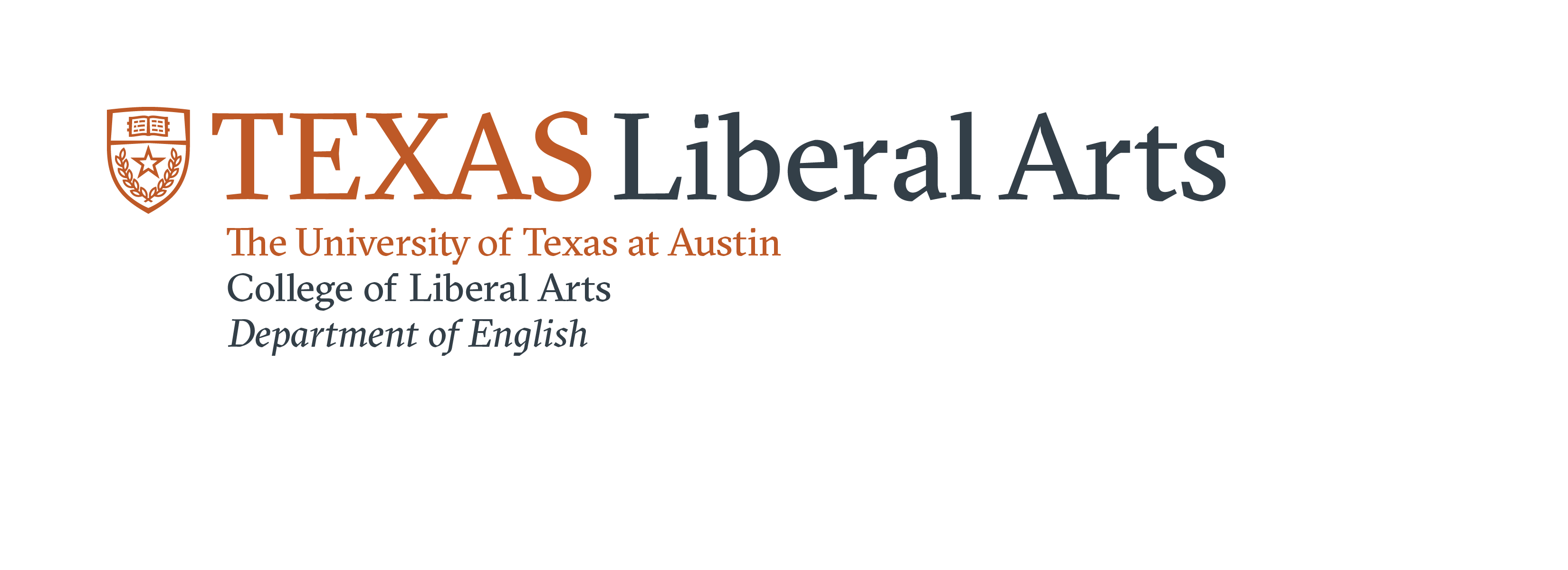
Dare Turner and Leila Grothe, editors
Preoccupied: Indigenizing the Museum
University of Washington Press, 2024
160 pages
$49.95
Reviewed by Courtney Welu
In the preface of Preoccupied: Indigenizing the Museum, editor Dare Turner of the Yurok Tribe of California writes that in her role as a curator of Native art, she must constantly ask herself how she can remain accountable to her community as one of few Indigenous curators in the white, colonial museum. In an attempt to involve the full Indigenous community in this institutional space, she and her collaborator Leila Grothe created Preoccupied for Native artists to claim space, centering their reflections and experiences inside and outside of the museum.
Preoccupied is a large-scale initiative coordinated by the Baltimore Museum of Art, in collaboration with artists and museum professionals from across North America. The book was published alongside Native art exhibitions in Baltimore, but important groundwork had to be laid to make this project possible. Turner and Grothe emphasize the behind the scenes work that went into putting the project together, including the creation of a Native advisory board, staff training and education on Native issues, and an ‘unconference’ where Native artists could be in community with one another and discuss their work.
The book is divided into two sections; the first includes poetry, essays, reflections, comics, and quotes from Indigenous artists about how their work engages with Native communities and the effects of colonization. The second section comprises images of the artwork displayed at the Baltimore Museum of Art during this initiative, as well as Native art housed at other institutions. The text-heavy front of the book provides a framework for how to look at and understand the art displayed in the back half.
Turner and Grothe specifically make an effort to move away from the language of ‘decolonization’ which “centers the wrong community: colonizers. It denies Native representation as a living, evolving cultural force and it flattens a wide range of experiences and neglects the future.” The word ‘decolonization’ does not encompass the work they are committed to doing in community with others.
Instead, Turner introduces the metaphor of a ‘controlled burn’—if decolonization is a bonfire that threatens to burn down the museum, a controlled burn is an Indigenous practice that sees fire as a tool to “maintain the health of the forest by preventing catastrophic fires down the road and making way for new growth to emerge.” If the museum burns down, then Native artists lose the chance to showcase their cultural heritage. Through this metaphor, Turner and Grothe land on the concept of the ‘Indigenization’ of the museum rather than the ‘decolonization.’ Turner’s reflections, scattered through the first half of the book, build upon the idea of the ‘controlled burn’ as a Native tool for change.
Many of the essays and quotes from artists bristle against the idea that art can have any real effect on the horrors of colonialism and the violence suffered by Indigenous communities. Artist Cannupa Hanska Luger reflects that “The work that I make isn’t transforming the impact of colonization. It’s repairing damage in myself.”
Artist Alan Michelson writes similarly that whether art works as a decolonizing force isn’t the right question. He says that “It assumes that one of my goals is to erode or undermine the impact of colonization, as if that were even possible to do with art.” Reading these reflections from the artists adds more dimensions to the visual experience of their artwork later in the book, and gives context to what Indigenous individuals and communities consider when they engage with the colonial space of the museum.
The tactic of employing ‘Indigenization’ instead of ‘decolonization’ also helps one of the central issues with representation of Native communities in the museum: the relegation of Indigenous people to the past, as “inanimate within museums” and “static relics in time.” Turner shares a story about a young Native girl visiting a natural history museum where she sees taxidermy dioramas of animals alongside models of the Chumash Indians; the girl believed that the models were dead bodies and that the museum put preserved Natives on display. Turner asserts that her mission as a curator is not to relegate Natives to a dead past, but to document Natives alive today, in continued community.
John Lukavic’s essay, “There are People Here: Reinstalling Indigenous at the Denver Art Museum,” reflects on the same tension. As a white curator in community with Native people, Lukavic’s essay provides a practical blueprint of allyship for any non-Native museum professional looking to work with Native artists. He discusses how the Denver Art Museum changed its labels to center people rather than tribes; if the artist was unknown, they would be recorded as “Cheyenne artist” rather than simply “Cheyenne.” Instead of displaying generically labeled Native artwork, they attempt to connect visitors with the real people who created it.
Preoccupied pushes away from decolonial language, though that is not the only way that it rebukes how we discuss Native art and artists. Paul Chaat Smith’s essay, “Land of a Thousand Guilts,” reminds readers that Native communities are multifaceted and do not share all of the same values, though white museum professionals still treat them as if they are all the same. Although museums may believe they are being progressive and inclusive, they instead might be flattening Native experience.
Smith considers this dynamic important not just in the context of museums, but in how Indigenous communities are treated more broadly by white progressives. Smith writes “If you regard Indians as fully human, it means you understand Indians are capable of all the brilliance and grace and ingenuity humans have demonstrated as well as all the evil and cruelty and stupidity that humans have also demonstrated.” He reminds readers that many tribes supported slavery and held slaves, just as many Native Americans today are Trump supporters; he believes that it is insulting to the humanity of Natives to say that the wrongs they have committed are only the result of colonization, and it is dishonest of museums to idealize Native people.
Smith’s essay is one of the most evocative pieces of the book; while other essays, like Lukavic’s, might provide more practical advice for displaying Indigenous art in the museum, Smith’s essay has a broader aim. He asserts that Native Americans are not a monolith, are not always going to be progressive, and many do not sit around and think about the impact of colonization in their day to day lives. It is still the job of museum professionals to engage with these Natives, too, and an Indigenous museum advisory board will never give curators the full range of Native voices and experiences.
The artwork in the second half of the book draws together a wide range of Indigenous artists from across the United States and Canada. Turner and Grothe provide brief introductions to each artist, but mostly let the artwork, from paintings to photography to basket weaving, speak for itself. The book also includes a catalog of every piece of art from the exhibitions, with a range of different attribution styles that reflect “a multiplicity of voices and perspectives.”
Preoccupied: Indigenizing the Museum succeeds in its aims to provide access to Native American art, but, more importantly, offers nuanced pictures of the histories, values, and politics guiding the individuals creating that art. Readers can see the artists as real, present-day human beings engaged in a long history of exclusion and violence, but also community, care, and love.

